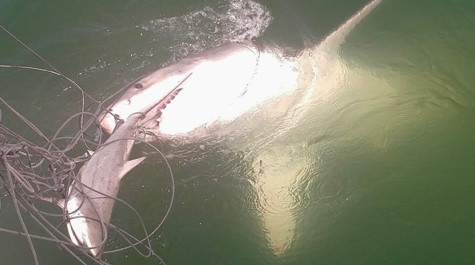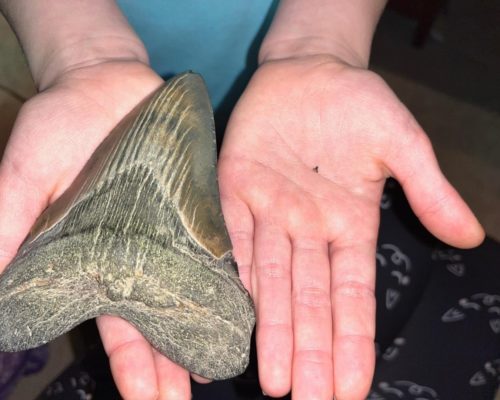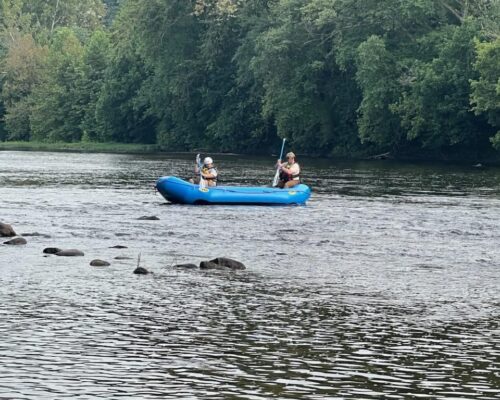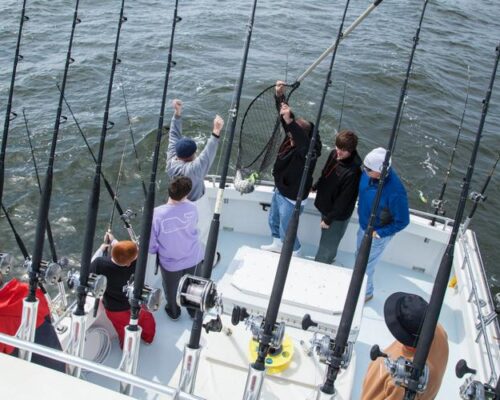“Shark Week” won’t air on our televisions for another few weeks, but a pair of great whites get their 15 minutes of fame with surprise appearances off of the Virginia Beach coast.
A great white takes aim at a small blacktip shark during a survey conducted by the Virginia Institute of Marine Science. Photo: Kaitlyn O’Brien/VIMSDuring the Virginia Institute of Marine Science (VIMS)’s Shark Survey earlier this month, two great whites appeared off of the Virginia Beach coast two days in a row. The first shark was an 8.5-foot male great white, only to be outdone by a 12- to 13-foot great white that surfaced the very next day. The larger shark came up at a survey station four miles offshore from Sandbridge.
While many smaller sharks usually turn up during the annual survey, the two great whites join only a few others that VIMS researchers have ever encountered during sampling.
The VIMS Shark Survey, part of the Institute’s Shark Monitoring and Assessment Program, has been surveying shark populations with a longline since 1973. During a multi-day cruise each month from June to September, researchers collect information about sharks at eight stations along the coast of Virginia. They range from just north to just south of the Chesapeake’s mouth. Sharks are measured, tagged, and have their DNA sampled before being released. VIMS credits the survey with helping to create a shark management plan in 1993. Shark populations have improved since.
VIMS says that the recent cruise saw a surprisingly large number of sharks- an average of 30 fish per 100 hooks. “These values are much higher than the 10-15 sharks per 100 hooks typically recorded by survey scientists over the long term,” VIMS notes. Cooler water temperatures may be the explanation; there are more nutrients in cooler waters, which means more forage fish and plankton, which means more predators like great whites, explains the Institute.
Cassidy Peterson, a VIMS PhD student who was on the boat for the great white sightings, says the back-to-back encounters were pretty unexpected. “This is a rather unusual event for us, here at VIMS, because our longline survey is not configured to effectively sample white sharks,” she explains. “Therefore, when we do catch white sharks, it is not a function of them being in the area when they usually are not, but rather a coincidence of one being hooked on our gear. Maybe this could be comparable to catching a bird with a butterfly net: certainly not out of the realm of possibility, but still rather unusual.”
Peterson says that it’s normal for white sharks to be in the Atlantic, since they migrate along the coast, and there have been a handful of instances where they were reported and found in the Chesapeake. “The few individuals that would enter the Bay would likely be smaller juveniles,” she points out.
“The catch of these two white sharks is certainly nothing for the public to worry about, and it may even be a positive sign that the once depleted population of white sharks in the western Atlantic Ocean is recovering,” says Peterson.
To learn more about the VIMS Shark Survey, click here.
-Laura Boycourt




